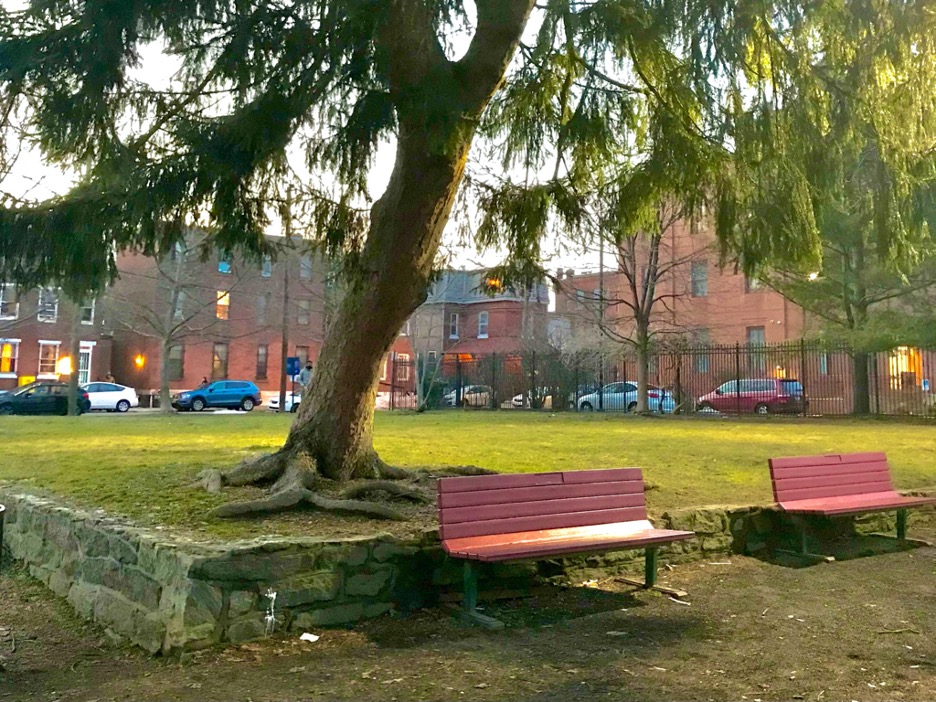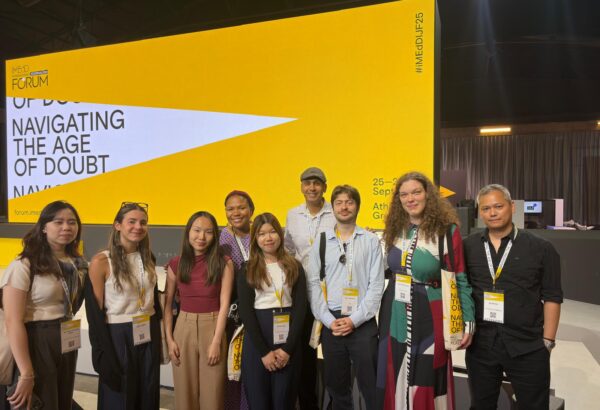I have a complicated relationship with sound. Anyone who knows me will confirm that I am always listening to music. I love podcasts, crunchy leaves, and the sound of passing cars in the city. But I also have misophonia, a condition that causes extreme sensitivity to certain sounds. I describe it as panic: an intense involuntary physical and emotional reaction to particular sounds. I could be in a bustling and lively cafe, surrounded by the comforting cacophony of white noise, but my mind and body can only focus on the sound of someone typing or chewing across the room. I’ve learned to modify my environment and control my emotional reflexes so that my daily life isn’t severely altered by misophonia, but it is still something that changes how I hear and perceive the world. From this, I’ve begun to see a dichotomy of sounds: the few that trigger a fight-or-flight response and the many that are beautiful and safe.
Listening as an active choice
I recently attended the SNF Paideia Program event with Ernesto Pujol and Dr. Carol Miller, “Other Ways of Knowing: The Listening Project”. It was a powerful conversation to be a part of, touching on everything from the importance of listening to ourselves to reframing listening as an active choice. This concept of listening has also recently emerged in my SNF Paideia designated course FNAR086: “Performance and Politics: Is This Really Happening? Performance and Contemporary Political Horizons” taught by Professors Brooke O’Harra and Sharon Hayes. Artists Michelle Woo and Tony Patrick joined our class to engage us in the act of building speculative futures. One activity we did was deep listening, in which one person in the room spoke, uninterrupted, for two minutes and everyone else just listened. There was time to reflect after the two minutes were up, but the task of doing nothing except listening resonated with me. So often we listen to respond or listen in search of personal anecdotes that we forget to bring it back to the basics: the pure and unaltered act of listening.
Experiential listening practice
I was fascinated by Ernesto Pujol’s performance art that centers around listening. In these pieces, he trains performers to listen to the world around them in different ways. While I am not a part of his Listening School, I decided to make my very own personal listening project around Philadelphia. One morning, I woke up at sunrise to walk to Center City. I left my trusty earbuds behind, no longer transforming my body into a container for sound. About 20 minutes into my walk, I noticed a shift. I was no longer letting the sounds of the city passively reach my ears, but I was actively listening to the world around me. Car engines, horns, sirens, and small talk began to form a symphony before my ears.
Listening moves beyond hearing
As I was listening to the soundtrack of my morning walk through the city, I reflected upon just how much weight in our society is placed upon sound. The ability to hear is a privileged identity, yet this privilege is not often discussed. Even the words we throw around casually in conversation (listen, overhear, etc.) denote the assumption of an ability to hear. Our society is designed to favor those who can hear and disregard those who are deaf. As a student who is minoring in American Sign Language and Deaf Studies, I engage with the language, culture, community, and the oppression of Deaf people in my courses. It is not in the scope of this blog post to share the many ways in which the ability to hear is elevated in society, but I want to remind readers that there are other ways of listening that don’t involve hearing at all.
From my involvement with the SNF Paideia program I’ve come to understand different strategies for both dialogue and collective wellness. And at the root of all of this–what makes us human and ties us to one another–is our ability to listen and communicate. Sound is complex; it brings me both pain and joy and it is something that is not accessible to everyone. Because of my misophonia, I hear the world differently than most people. But this doesn’t mean that I am any less of a listener, and it is this listening that I hope to practice and grow into. Listening is something we all choose to do, regardless of how we hear.




